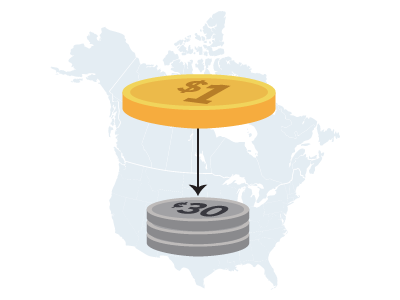The U.S. knows it has a good thing going with Canadian trade
Trade and investment with Canada directly supports over 2.3 million American jobs.

U.S. goals could create new opportunities for Canadian businesses

How to succeed in this new U.S. market
Start by reaching out to your U.S. customers and business partners to discuss a Plan B, including how to deal with different outcomes.






